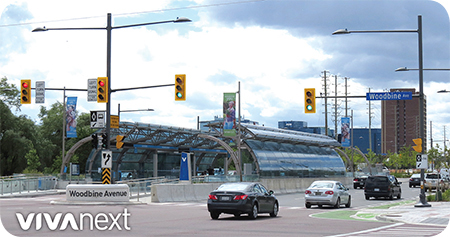Most people look at traffic signals every day, but don’t notice how they’re configured, or why they’re installed the way they are. Traffic signals change quite a bit with our construction projects, and not just from green to yellow to red.
Once a project is underway, each intersection in the construction area receives a new, temporary traffic signal pole on each corner, set farther back from the road. Then temporary traffic signals are strung on wires across the intersection from these temporary poles.
Once the temporary poles are in place, the old poles and signals are removed, including any poles in the centre median in each direction.
Having the temporary poles farther back from the road allows access for relocating utilities and widening the road. As lanes are shifted and the road is widened, the temporary signals are adjusted along the wires to ensure they’re in the correct place for traffic and pedestrians.
Later in the project, new poles are installed in their final location, and permanent traffic signals are added, along with a dedicated left/U-turn signal.
Each time the traffic signals are changed, paid-duty police officers are on hand at each intersection for a few hours to ensure traffic flows safely through the intersection. If you’re on Yonge Street in Newmarket or Bathurst and Centre Streets in Vaughan, you’ve seen this firsthand recently.
For a peek at the final outcome, check out the sections of rapidway on Highway 7 East in Markham and Davis Drive in Newmarket.
Despite the cold weather, the vivaNext team continues to work out on the corridors and behind the scenes – making progress as seamlessly as possible.

